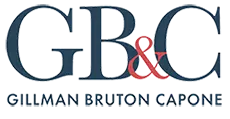Former CEO Who Filed Chapter 7 Personal Bankruptcy Denied Discharge of Debt Owed to Employees by Insolvent Corporation
The Bankruptcy Code provisions relating to a Chapter 7 Bankruptcy case seek to achieve two objectives which frequently conflict with one another. The “fresh start” provisions of Chapter 7 seek to avoid the creation of a permanent debtor class and date back to the concepts of debt forgiveness established in the Old Testament. However, a debtor may not discharge certain types of debt on grounds of public policy. In some areas, the reasons for the desirability of a particular public policy is clear beyond question. For example, debtors cannot discharge their domestic support obligations owed to their children and spouses under Section 523(a)(5) of the Bankruptcy Code.
Sometimes the public policy rationale is less clear. Some forms of personal federal and state income taxes cannot be discharged under the Bankruptcy Code while others others are possibly dischargeable. If a debtor has timely filed his or her tax returns and not paid the the taxes, interest and penalties due on the returns for more than three years after the returns are first due, the taxes may be dischargeable. Some might object that this ‘rewards’ those who avoided paying their taxes at the expense of those who have timely paid their obligations.
The public policies which guide the Bankruptcy Code can unintentionally have a punitive effect on debtors who have been victimized and would therefore appear to be among those a ‘fresh start’ bankruptcy was intended to benefit. Debtors have been induced into taking out large student loans on the false promise that the education these loans were used to pay for would certainly provide opportunities for desirable employment. When the false promises and those who made them have disappeared like the medicine show pitch-men who promised that their magic elixir would cure all their ill, a debtor is faced with Bankruptcy Code Section 523(a)(8) which makes it virtually impossible to be relieved of these obligations.
U.S. Department of Labor v. Harris
The question presented in U.S. Department of Labor v. Harris, Case No. 16-6024 (8th Cir. 2017) was whether the a debtor could discharge a judgment entered against him by the U S Labor Department. Harris, the Debtor and former CEO of a corporation had used funds paid by employees to the corporation for health insurance to pay debts of the corporation and to make payments on personal loans he had made to try to keep the corporation afloat. The judgment entered against him was based upon his duties under the Employee Retirement Income Security Act (ERISA), a federal law intended to protect retirement savings which imposes fiduciary obligations upon anyone who exercises any discretionary authority or discretionary control respecting management of a retirement plan.
It was not disputed that Harris did not intended to defraud the employees and that he had used the funds to attempt to keep the corporation in business. That Harris was seeking to avail himself of the ‘clean slate’ provisions of a Chapter 7 personal bankruptcy made clear that his efforts to save the insolvent corporation, was proof that he himself had ‘ gone down with the ship’.
However, “11 U.S.C.S. § 523(a)(4) [of the Bankruptcy Code] excepts from an individual debtor’s discharge any debt for fraud or defalcation while acting in a fiduciary capacity. Although the “exception to discharge under § 523(a)(4) is construed narrowly against the creditor opposing discharge”, the Court held that Harris could not discharge his debt because his conduct fit within the narrow definition of the Code.
The Court relied on a prior holding in Rutanen v. Baylis (In re Baylis), 313 F.3d 9 (10th Cir. 2002). The Court wrote that those found to have engaged in defalcation have been denied the benefits of discharge for over a century (“This provision has been part of the Bankruptcy Act since 1867.”) However, as the Baylis Court wrote, it is anything but settled what that narrow definition describes.
After examining three distinct and mutually exclusive definitions used by other courts, the Court in Baylis concluded: “We believe that defalcation lessens the threshold required from one of criminal or civil fraud to something less. To show defalcation, a creditor need not prove that a debtor acted knowingly or willfully, in the sense of specific intent. However, a creditor must be able to show that a debtor’s actions were so egregious that they come close to the level that would be required to prove fraud, embezzlement, or larceny.” Baylis at 20.
The Court’s definition is useful, but hardly satisfying. In a close case, the issue is always how close is close enough to deny a bankruptcy discharge to a debtor. At least, it seems to assure that bankruptcy lawyers will not soon suffer the fate of those whose work can be automated by being reduced to a series of dichotomous variables.


